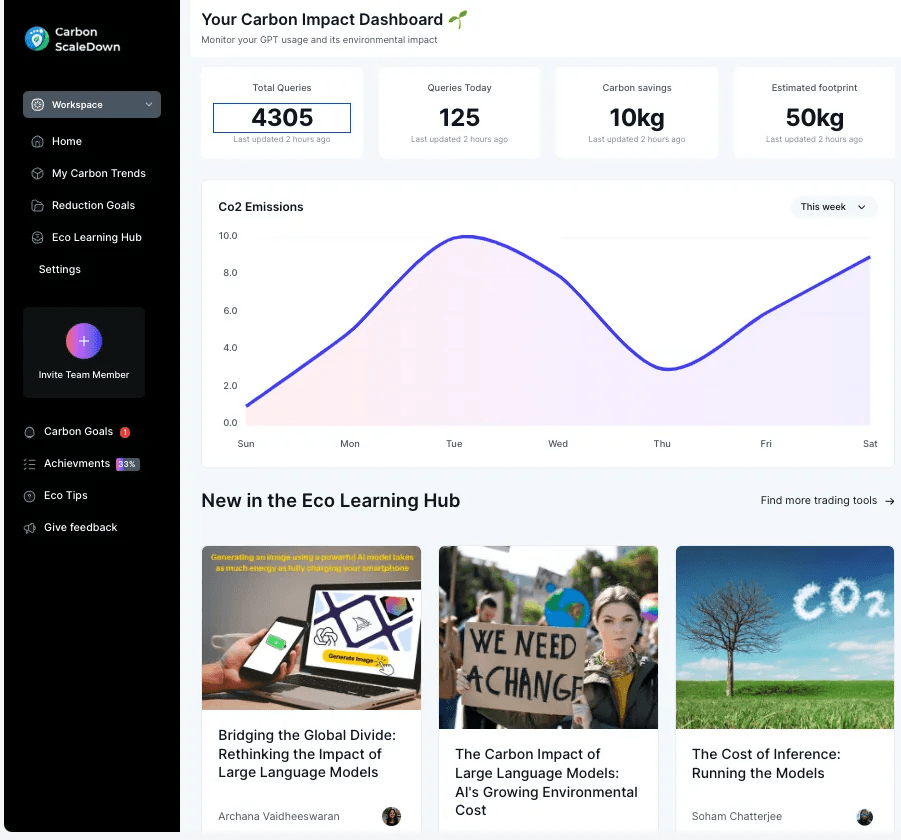10 Jan 2024
Reaching for the Plug: Energy Considerations for Deployment
Resources
The paper doesn't just highlight the differences in tasks. It also leads us to a vital understanding: models like GPT-4, which can do various tasks, tend to consume more energy in inference than models designed for a specific task. This difference can be staggering, especially when these models are deployed at a large scale, serving millions of daily active users.
This brings us to the crux of the matter. When deploying AI in the real world, we must consider the energy it uses every time it's called into action. It's like deciding whether to walk, bike, or drive to work, considering the impact on your wallet and the environment.
When we think of LLM, we often marvel at its ability to learn. However, the real-world impact of AI comes from its 'inference' phase—when it applies what it has learned to new data. It's like an AI's day job, interacting with users to provide answers, create content, or make decisions. And just like any job, some tasks use more resources than others.
While GPT-4's capabilities are a technological tour de force, they also underscore a critical balance between efficiency and capability. The energy used during inference can vary based on the task—whether answering a simple query or generating an intricate image. This is where the energy considerations become pivotal for users and developers alike, highlighting the need for responsible deployment and usage of such advanced AI systems.
Enlightened Usage: Our Role in AI's Energy Narrative
This is where we, as users, come into play. The 'Power Hungry Processing' paper doesn't just cast a light on the energy consumption of AI; it also illuminates our role in this ecosystem. By understanding the power dynamics of AI models like GPT-4, we can make more informed choices about when and how we use these incredible tools.
As we navigate the digital landscape, our clicks and queries leave behind an invisible trail of energy consumption. But what if we could illuminate this path and choose a greener route? Enter the Carbon ScaleDown, our innovative Chrome Extension designed to bring transparency and control to your digital carbon footprint.
Empowering Conscious Computing - The Genesis of Our Chrome Extension
As we've explored the varying power demands of AI models and their tasks, the need for transparency and control over our GPT carbon footprint has never been clearer. This is the cornerstone upon which we built our Chrome extension - a tool designed to measure, manage, and mitigate the energy impact of GPT interactions, specifically for image versus text queries.
Our Chrome extension not only measures energy impact but also optimizes AI queries to reduce token usage and carbon footprint. For example, by refining a prompt from 'Explain how photosynthesis works in plants' (7 tokens) to 'Summarize photosynthesis in plants' (5 tokens), users can maintain clarity while reducing resource consumption, making each interaction more eco-friendly.
Why Carbon ScaleDown?
Imagine having a fitness tracker for your environmental health right in your browser. That's what Carbon ScaleDown does for your GPT interactions. It calculates the carbon footprint of your text and image queries in real time, translating opaque energy consumption into clear, actionable insights. This isn't just an extension; it's a commitment to conscious computing, a companion in your journey towards sustainability.
The Chrome extension incorporates these calculations to give users real-time estimates of the carbon footprint for using ChatGPT, whether they generate text or images. This immediate feedback loop is crucial for raising awareness about AI models' environmental impact and encouraging more sustainable practices among users.
Our Vision: A Dashboard for Change
Knowledge is power(literally), and with Carbon ScaleDown, you're armed with the knowledge to make greener choices. It's a tool that doesn't just inform you but also transforms your online behavior. You'll see the impact of choosing a text response over an image, asking concise questions, and our collective power to shape a more sustainable AI future.

This extension is just the beginning. We're working towards a comprehensive dashboard allowing you to track, analyze, and reduce your digital carbon footprint over time. Imagine being able to offset your digital activities and strive for not just a net zero but a net-positive online presence.
How Does It Work?
That concludes our exploration for today. We've uncovered the rationale behind creating the Chrome extension Carbon ScaleDown: a response to the significant, yet often overlooked, carbon emissions from the daily use of models like ChatGPT.
In our upcoming blog, we delve deeper into how we are calculating the carbon emissions of ChatGPT in our Carbon ScaleDown chrome extension. Our analysis considers various factors, including the model's size, the efficiency of the underlying hardware, and the energy sources powering the data centers.
We also show how a simple chatGPT query’s energy consumption is roughly 1000 times more than a simple Google search, highlighting the significant environmental impact of frequent LLM usage.

